Ralph Burns
Ralph Burns is the CEO of Tier 11 (TierEleven.com), a digital advertising agency that specializes in helping businesses scale through Facebook advertising. Ralph’s agency manages a portfolio of Facebook advertising customer accounts in over 30 industries with annual spend in excess of $40 million.
The eCom ad amplifier crushes return on ad spend. Ecommerce stores selling physical products use this Facebook ad campaign strategy to impact their profits and grow their customer base. These three proven Facebook ad campaigns are comprised of five levels:
Level One: Post
Level Two: Engagement and Page Views
Level Three: View Content Level Four: Add to Cart Level Five: Purchases
These levels work together to create successful ad campaigns. Each campaign differs based off of the type of post. For example, an ad campaign designed to be a lead magnet only takes people to level two, where they engage and view a page. An ad campaign on an Instagram story will go through all five levels, ending with the user purchasing the product.
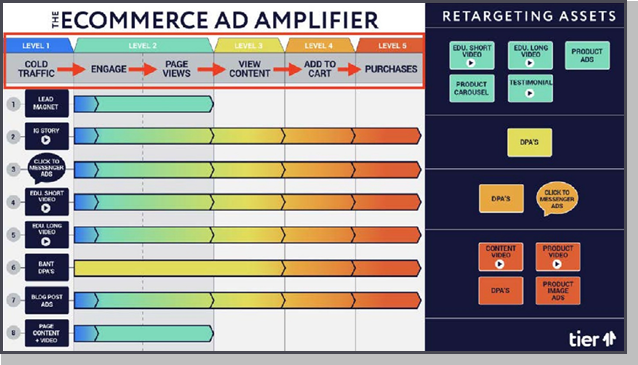
Using this eCom ad amplifier, businesses are pushing products by bringing customers through the five levels with carefully curated advertisements.
Let’s look at three examples of Facebook ad campaigns that have successful utilized the eCom ad amplifier.
Example One: The Morgan
This Facebook ad campaign tripled ad spend and then tripled the return on ad spend, 10x ROI. “The Morgan” is named after the average shopper who isn’t particularly interested in a particular niche and is easily swayed to purchase.
In this campaign, level one only contained a lead magnet, educational short videos and Instagram stories. It’s designed for a simple product like bath bombs. Bath bombs are easily sellable and a perfect Facebook product. Ads can be used to increase profits and to also capture leads through contest giveaways.
Each of the cold traffic methods is followed by four steps. Engage the people on their newsfeed, reinforce them with retargeting ads, overcome them with dynamic ads and recreate engagement with loyalty ads.
Ads for “The Morgan” ad campaign look like this:
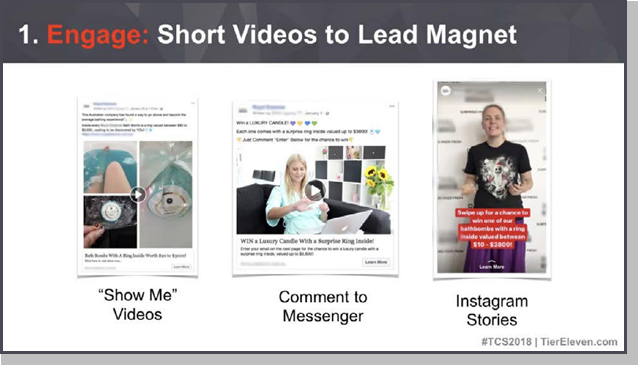
The lead magnet advertisement for these ads looks like this:
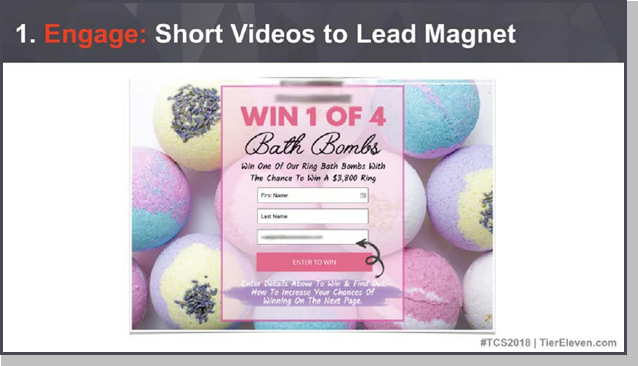
Reinforcing these ads involves showing the user a different kind of ad. In the case of the bath bombs, an educational short video or testimonial video is
used. Cold traffic ads can be repurposed as reinforcement ads. This is when level two is achieved and ad campaign officially begins. This initiates the dynamic product ads like the one below:
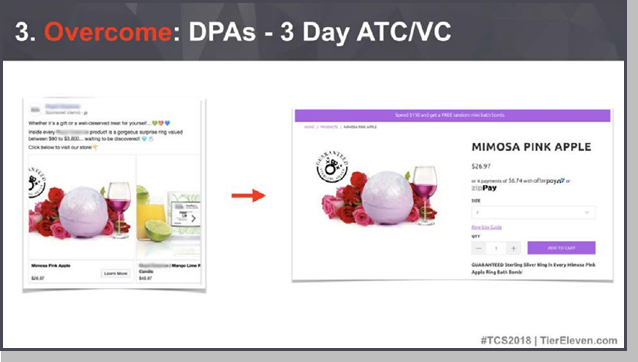
Using the last action of a user ID, Facebook will show the user the most relevant product in the product log. For example, the above user added the bath bomb to their cart and then abandoned it. Using the user’s ID, Facebook shows this ad to that user. This algorithm makes dynamic product ads have a high ROI. The ad will then link to the product page.
If a user abandoned a cart between four and twenty days, they’ll see a slightly different ad like this one below:
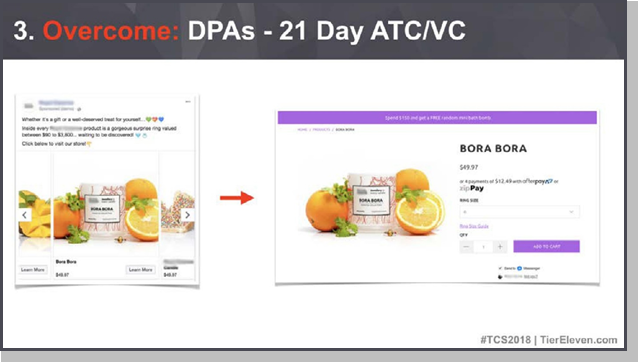
The ad will be coupled with a coupon code to motivate the user to make the purchase. Following the dynamic product ads is the final step of re- engagement. Re-engagement promotes similar products to the same user that initially purchased. These advertisements look like this:
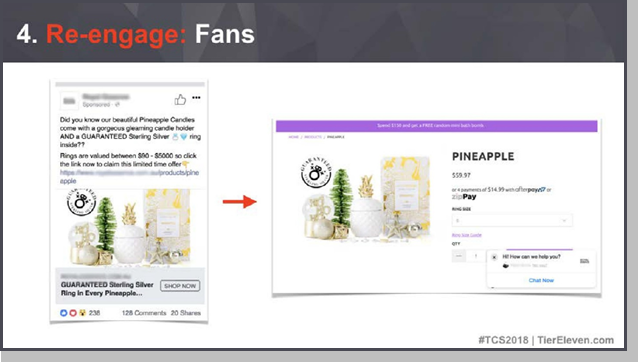
The results of “The Morgan” ad campaign look like this.
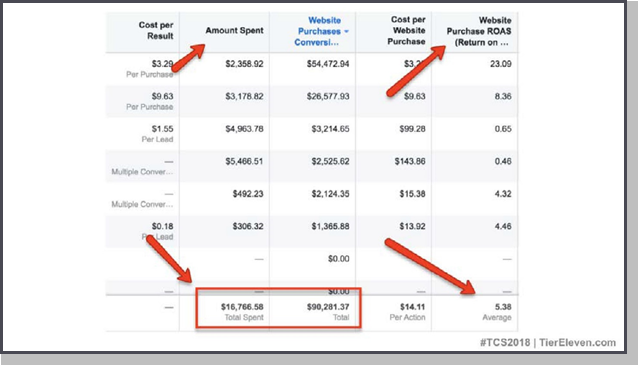
Example Two: The Chuckle
The Chuckle ad campaign has proven to have a 70% return on ad spend increase with a 6x in business in six months. Using this campaign, a laser hair growth company took ad spend from $30,000 per month with a 2x ROAS TO
$160,000 per month with a 2.7x ROAS. The Chuckle is named after a more intermediate, smarter shopper than “Morgan.” Chuckle is going to invest
$600 into this product.
This campaign uses the top four cold traffic methods of lead magnet, IG story, click to messenger ads and EDU short videos. It then launches into three steps to achieve a sale. First, it starts with short and long education videos, then the message is reinforced with retargeting ads and then Chuckle is overcome with dynamic product ads.
Short and long education videos are used to tell a story and show proof that a product works. These videos are 60 seconds to six minutes long. Shorter videos are shown on Instagram posts or stories. Getting people to pay attention to a video on their newsfeed involves motion. All videos should immediately start with a motion and then describe a problem. In the case
of the laser hair growth product, a clinical study is described to validate the product, an explanation of how it works and then picture proof of it working. The video ends with a recommendation to use the product, as can be seen in the example below:

The second step is to retarget users who have shown interest in the product but have purchased it yet. Ads, the above one, that are engaging people
in level one can always be used in level two. These ads are targeted to the specific ideal customer and testimonials are added for proof of it working.

The last step is overcoming by using the dynamic product ads that are targeted to users that have previously placed the item in their cart. Just as with “The Morgan” dynamic product ads, different ads are created for customers who have placed the product in their cart in a variation of days.
Depending on the product, even this ad campaign may have trouble scaling.
That’s what dynamic creatives come in. Dynamic creatives is a new tool on Facebook that allows 30 different variations of an ad, based upon image, description, headline and post copy. These variations are shown to the retargeted audience and help build social proof, even for products that seem too good to be true.
Here is an example of dynamic creatives for the Facebook ad campaign:

The results of The Chuckle ad campaign strategy look like this:

Example Three: The Will
The Will is an ad campaign strategy for very smart, complicated individuals. They vary from Morgans and Chuckles by being much harder to convince to purchase. Using this campaign, a protein powder company took ad spend from $30,000 per month with a 0.25x per month ROAS to $570,000 per month with a 1.1x per month ROAS.
This campaign strategy uses all eight cold traffic methods to increase sales. The Will implements four steps, educating, reinforcing, overcoming and reminding.
Using all eight cold traffic methods, educational advertisements are created to generate leads and push users towards a sale. Facebook posts, Instagram posts and stories and Canvas video ads are implemented to show users why they need this product.

In this ad campaign, level one and level two are shown to the same audience. Retargets use the same ads or slightly verified ads to target the same group of potential customers. The idea is to get page views and continue to achieve engagement with posts. This is what the retargeted ads look like:

After retargeting, users are are shown the same type of dynamic product advertisements used in the above two campaign examples. These dynamic product advertisements are marketed as such and for the protein powder product look like this:
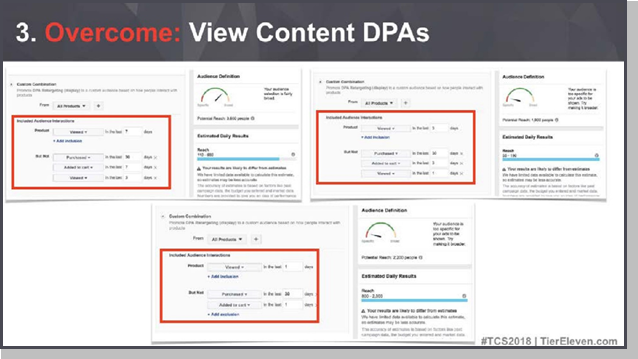

The last step in the Will ad campaign is to remind users to add the product to their cart. These reminders are created for users with abandoned carts from one, three and seven days. All purchasers are excluded for thirty days before being reminded of the product with these advertisements. In the overcome phase, the messaging is slightly different by saying, “Let’s remind you of this product since I know you’re going to buy it anyway.”

The results of the Will ad campaign look like this:

Campaigns are created around a product, they are created around the customer. The three eCom ad amplifier campaigns are specifically created for three different types of customers. Depending on the type of customer, different levels of the eCom ad amplifier are used to increase sales.
The Morgan, Chuckle, and Will ad campaign strategies can be used to increase product sales of physical products all through Facebook
advertisements. Use the power of the Facebook algorithm to scale your business and create high return ad campaigns worth the ad spend.
